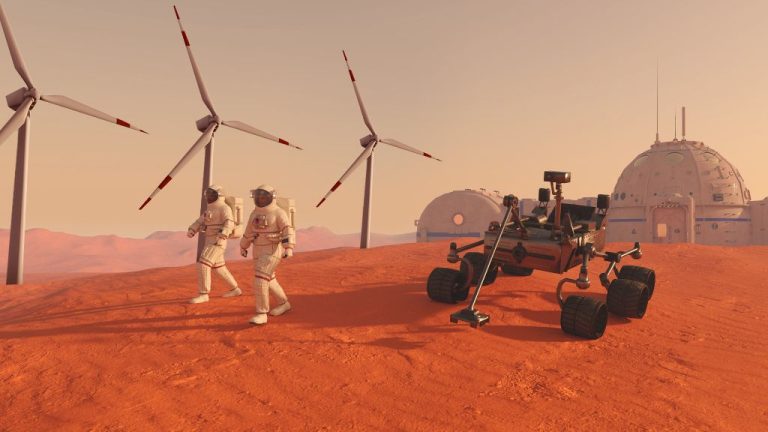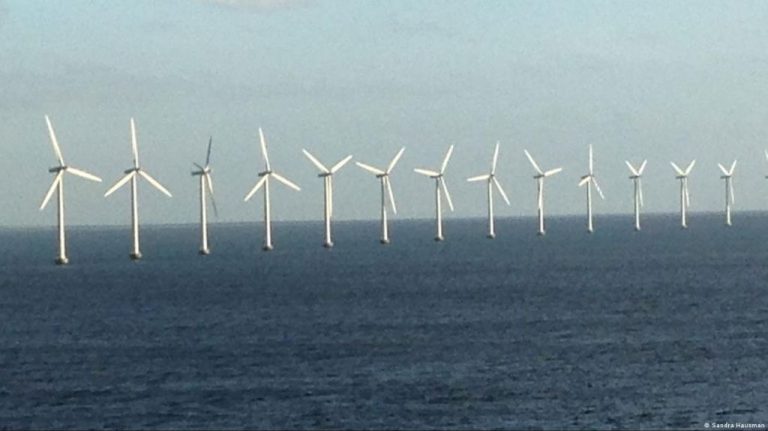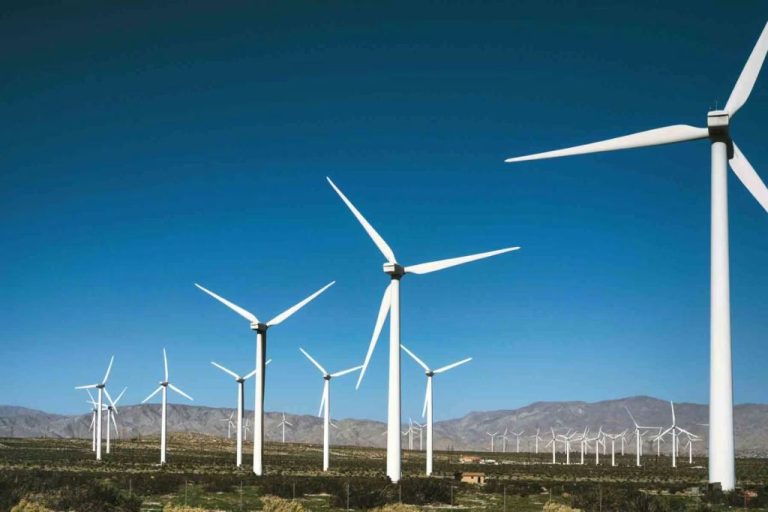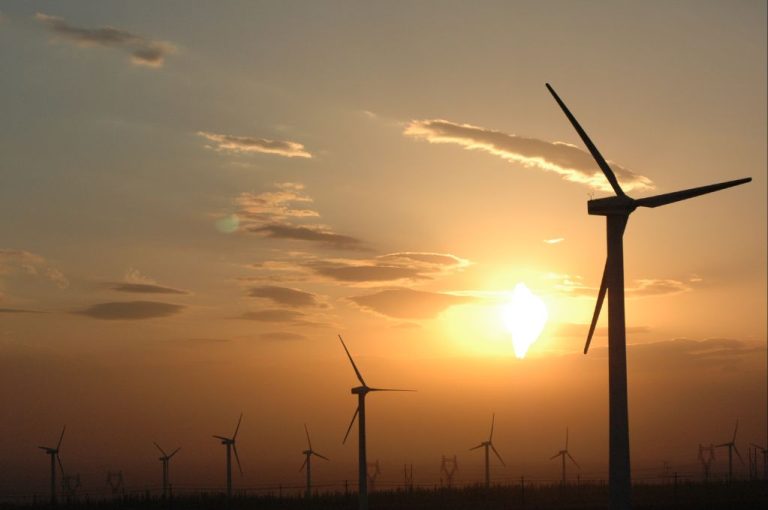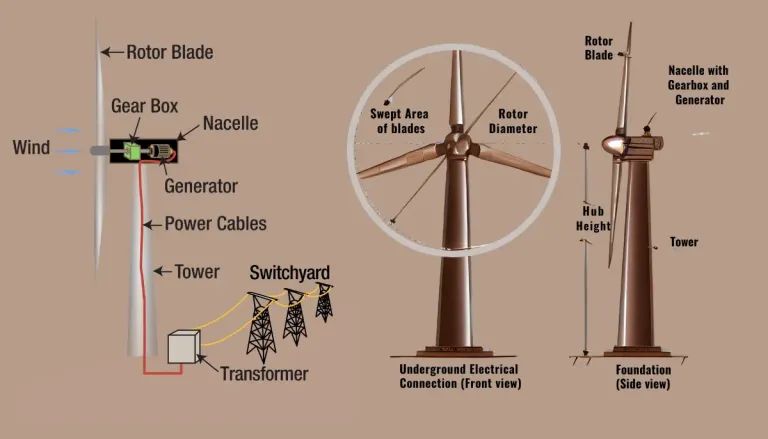How Do We Collect Energy From The Wind?
Wind energy is the kinetic energy generated from the movement of atmospheric air. Wind turbines convert the kinetic energy of wind into mechanical power, which is then converted into electricity. As a renewable energy source, wind energy does not produce greenhouse gas emissions and can help reduce reliance on fossil fuels like coal, oil, and natural gas.
With the growing concerns around climate change and energy security, renewable energy sources like wind are becoming increasingly important. Many countries around the world are looking to increase the share of renewables in their energy mix and reduce carbon emissions. Wind energy offers a sustainable way to generate electricity while diversifying the energy supply.
The transition away from fossil fuels towards renewable energy is already underway in many places. Wind power is one of the most rapidly growing renewable energy technologies worldwide. With advancements in turbine technology and placement, wind has the potential to meet a significant portion of the world’s electricity demand.
Wind Turbine Components
Modern wind turbines are sophisticated pieces of machinery designed to efficiently convert the kinetic energy of wind into electrical energy. Though models can vary based on size and configuration, most have several key components in common:
Blades
The blades are what capture the wind and initiate rotation. They are usually 30-50 meters long and specially engineered to be lightweight yet sturdy. The optimum number and shape of blades will depend on the turbine size.
Shaft
The shaft is connected to the rotor and turns as the blades spin. It transmits the mechanical power into the gearbox. The shafts are typically made of steel and housed within a casing for protection.
Gearbox
The gearbox increases the slow rotation speed of the rotor shaft to the high speeds required by the generator. This speed-increasing function allows the turbine to operate efficiently. Gearboxes are enclosed units with sophisticated lubrication systems.
Generator
The generator uses electromagnetic induction to convert the mechanical power delivered by the gearbox into electrical power. Various designs exist, with asynchronous (induction) generators being common for wind turbines.
Controller
The controller regulates the operation and output of the turbine. It monitors wind direction and speed, activates yaw and pitch mechanisms, and interfaces with the grid connection.
Tower
The tower supports the rotor, drivetrain, and nacelle. It is made of steel or concrete and must be tall enough to access faster wind speeds at higher elevations. Typical hub heights are 60-100 meters.
How Wind Turbines Work
Wind turbines convert the kinetic energy in wind into mechanical power which is then converted into electricity. Here is how wind turbines are able to harness the power of the wind:
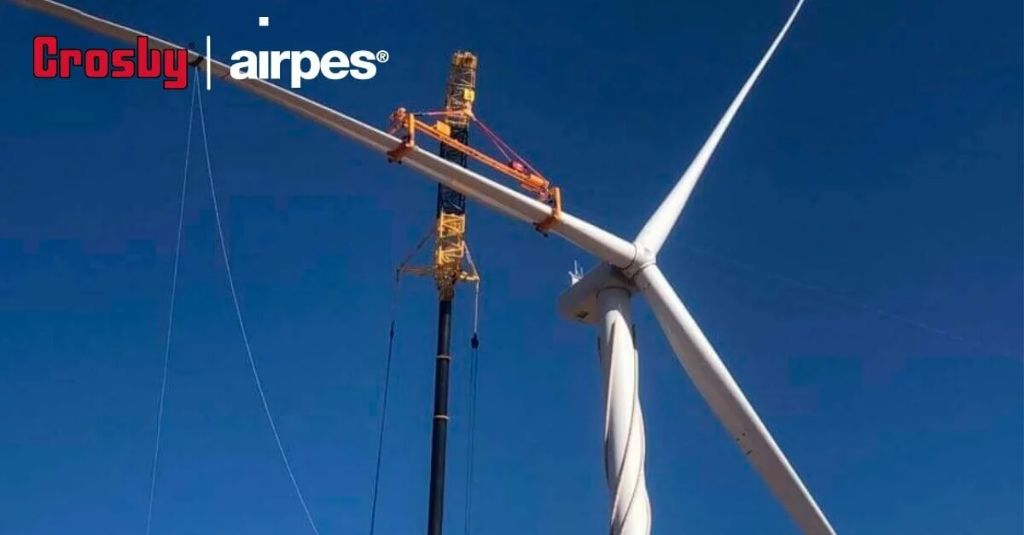
Wind turns the blades of the turbine, which spin a shaft connected to a generator. The kinetic energy of the spinning blades gets transferred into rotational energy in the shaft.
A gearbox is used to increase the rotational speed so that the generator can operate more efficiently. The gearbox converts the slow rotation of the turbine into much faster rotation that is required by the generator.
The generator then converts this mechanical rotational power into electrical power. The most common type of generator used is an induction generator. As the shaft spins inside the generator, it causes a magnet to spin around a coiled wire, which induces a current that generates electricity.
The electricity that is generated can then be fed into the utility grid for use in homes, businesses, and by the utility company.
Onshore vs Offshore Wind
There are two primary locations for utility-scale wind farms: on land (onshore) and offshore in bodies of water. Each has its own unique advantages and disadvantages in terms of costs, available land, environmental impact, and energy production.
Onshore wind is the most mature and cost-effective option today. Constructing wind turbines on land eliminates the need for underwater foundations and long transmission cables to shore. Onshore wind farms can be built quickly, have lower maintenance costs, and benefit from easier access for repairs. However, suitable onshore sites must have enough steady wind, be near existing transmission infrastructure, and address potential impacts like noise on nearby communities. There is also limited available land area to support continued onshore wind development in the long-term.
Offshore wind is a newer but rapidly growing industry. While offshore wind farms are currently more expensive to build, they benefit from much higher wind speeds which leads to higher capacity factors (actual output divided by maximum output). This can offset the higher initial costs over time. Being built far from view also minimizes community objections to construction. However, potential impacts on marine life must be carefully managed. The distance from shore also requires unterwater cables for delivering the electricity to land. Future floating wind turbines could open up even more offshore regions for wind development.
In determining onshore vs offshore wind, governments and industry weigh the tradeoffs in costs, energy production, environmental impacts, and social acceptance. While onshore is currently more economic, offshore wind’s potential scale and output are likely key pillars of the global renewable energy transition.
Wind Farm Components
In addition to the wind turbines themselves, wind farms contain various other infrastructure and components to generate, collect, and transmit the electricity. Some of the main wind farm components include:
Roads – Wind farms require extensive roads and pathways to access each individual turbine for construction, maintenance and operation. The roads need to be built to withstand heavy trucks and equipment needed to transport, erect and service the turbines.
Power lines – Underground or overhead power cables are required to collect the electricity generated by each wind turbine and transmit it to the power grid. This includes cables connecting each turbine to a central substation as well as transmission lines carrying high-voltage power to the grid.
Substation – A substation collects the generated power and uses transformers to increase the voltage for efficient transmission on the grid. Substations also contain switchgear, monitoring equipment and other electrical components.
Meteorological equipment – Sophisticated monitoring equipment like anemometers, wind vanes and lidar are used to provide real-time weather data and understand the wind resource. This informs decisions on turbine placement and operations.
Grid Integration
Connecting wind turbines and farms to the utility grid can be challenging due to the variable and intermittent nature of wind energy. Unlike traditional power plants that provide consistent power, wind speeds fluctuate, causing the electrical output from turbines to vary minute by minute and hour by hour. This variability can pose difficulties in maintaining stable grid operation if wind makes up a significant portion of the supply.
To integrate large amounts of wind energy, grid operators have to be able to balance supply and demand. Strategies for grid integration include:
- Improving forecasting of wind availability
- Increasing generation reserve margins
- Using more flexible generation sources like natural gas to complement wind variability
- Developing energy storage systems
- Expanding and strengthening transmission capacity
- Implementing advanced power electronics and control systems
- Encouraging demand response to shift usage to windy periods
With the right strategies and investments, wind power can scale up significantly while maintaining grid reliability.
Environmental Impacts
While wind energy offers many benefits, wind turbines can also have negative impacts on the environment if not properly sited and mitigated. One major concern is avian mortality – birds and bats can be killed by colliding with turbine blades. Careful siting away from major bird migration routes and habitats can help minimize this risk.
Wind turbines also generate noise as the blades rotate through the air, which can disturb nearby residents. Proper siting distances from homes and noise reduction technology on turbines can reduce noise impacts. Some people also object to the aesthetic impact of wind farms on landscapes. Visual impacts are subjective but siting turbines away from high visibility locations can help.
Finally, wind farm construction can disrupt wildlife habitat and land use. However, the footprint of turbine foundations, access roads and other infrastructure is relatively small. With proper siting and environmental reviews, habitat disruption can be minimized. Overall, while wind power does have environmental constraints, they can often be avoided or mitigated through careful siting, technology improvements and environmental impact monitoring.
Economic Benefits
The wind energy industry provides substantial economic benefits at the local and national levels. Wind farms create jobs in construction, operations, maintenance, manufacturing, and other areas. According to the American Wind Energy Association, there were over 120,000 wind energy jobs in the United States in 2021. Many of these are local jobs that cannot be outsourced.
Wind projects also provide new revenue sources for landowners, communities, and local governments. Landowners receive regular lease payments when they host wind turbines on their properties. This provides farmers and ranchers with predictable income that can help sustain multigeneration family farms.
Communities also benefit from increased tax revenue, which supports public infrastructure and services. Wind projects pay sales taxes on equipment purchases as well as property taxes over their lifetime. The American Wind Energy Association estimates that wind projects paid over $2 billion in state and local taxes in 2021.
In addition to creating jobs and generating tax revenue, wind energy helps stabilize energy costs once the turbines are installed. Wind power has zero fuel costs since the fuel (wind) is free. This helps protect consumers from the severe price volatility of fossil fuels like natural gas and coal. The fixed costs and zero fuel costs of wind energy provide a valuable hedge against future spikes in electricity prices.
Future Outlook
The future of wind power looks bright as technology continues to advance and more capacity is added around the world. Some key trends in the future of wind energy include:
Offshore Expansion
Offshore wind farms currently make up a small portion of total installed wind capacity, but are expected to grow substantially in the coming years. Floating offshore platforms open up vast areas for development, as they can be located in deeper waters further from shore.
Larger Turbines
The average turbine size has increased dramatically over the past decade, going from 1.5-2 MW capacity up to 4-5 MW for many new towers. Even larger 10-12 MW offshore turbines are now under development, which harness stronger and more consistent winds.
Energy Storage
Integrating grid-scale energy storage will help manage the variability of wind power and align generation with electricity demand. Battery storage is becoming more affordable and could enable greater wind penetration.
With these innovations and continued policy support, wind has the potential to supply 20% or more of global electricity by 2030. Costs are expected to continue falling as well, making wind one of the most affordable and sustainable energy sources going forward.
Conclusion
In summary, wind power is an essential part of transitioning to a clean energy future. We have a highly sophisticated understanding of how to capture wind’s kinetic energy through modern wind turbines. While wind power is already cost-competitive with fossil fuels, continued innovation promises to bring down costs further in the years ahead. Both onshore and offshore wind farms will continue to expand across the globe, complementing other renewable sources and displacing more carbon-intensive forms of generation. Although wind has some environmental impacts, it provides significant economic and climate benefits. With the right policies and investments, wind can provide over a third of the world’s electricity by 2050. Wind energy will be critical for mitigating climate change and building sustainable energy independence.

